Your Olive Oil Hunter Prevails! Presenting Three Stunning Fresh-Pressed Extra Virgin Olive Oils from Chile
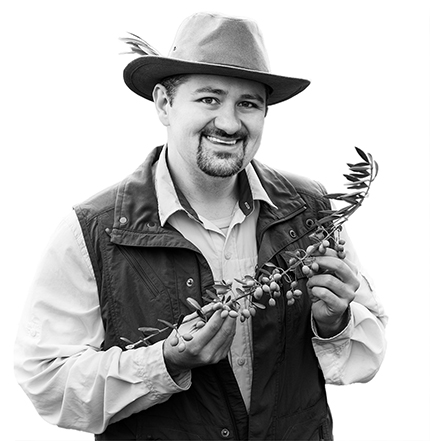
- Aromatic, intensely flavored, and bursting with healthful polyphenols, these vibrant extra virgin olive oils will delight you and everyone who shares your summer table.
- All were crafted exclusively for Club members from olives grown on a single awardwinning estate, and are available nowhere else in the US.
- All have been certified by an independent lab to be 100 percent extra virgin.
- Despite limited transport options, I was able to rush the oils to the US by jet straight from the harvest.
Life has changed in profound ways since the last Pressing Report was published. I fervently hope you and your loved ones are weathering the Covid-19 crisis with your health and good spirits intact.
A heartfelt thanks to all who reached out to me via email or social media to wish me and my family well in these unprecedented times. Thanks, too, to the Club members who, affirming the importance of fresh-pressed olive oil in their lives, implored me to persevere. Especially since many, sheltering at home and cooking more, reported running low!
In the words of my friend and Chilean olive oil producer Juan José Alonso, “Stopping is not an option.” And that’s where this quarter’s narrative begins.
Chile is Agriculturally Gifted, But the Epic Drought Continues
Chile has long been my destination this time of year. Since 2005, I have forsaken the arrival of spring in the Blue Ridge Mountains for fall-like weather in the shadow of the snow-capped Andes. All told, I have spent about 18 months of my life there—sufficient time to forge close relationships with the country’s finest olive oil producers. My Merry Band of Tasters and I have yearly made multiple visits to their groves, met their teams, attended their harvest parties, been introduced to their families, shared many meals together, and even spent nights on their farms.
Few people know that Chile produces olive oil. (It is the second-largest producer of “liquid gold” in the Americas, an astounding 90 percent of it extra virgin.) Its rapid ascent to the world olive oil stage is due to a number of factors: the Mediterranean-like climate of central Chile; its success growing wine grapes and other fruits for export; an absence of olive diseases and pests; an abundance of young but experienced agricultural talent; and the willingness of Chilean olive oil pioneers to break from traditional ways of doing things, to encourage innovation and creative problem solving.
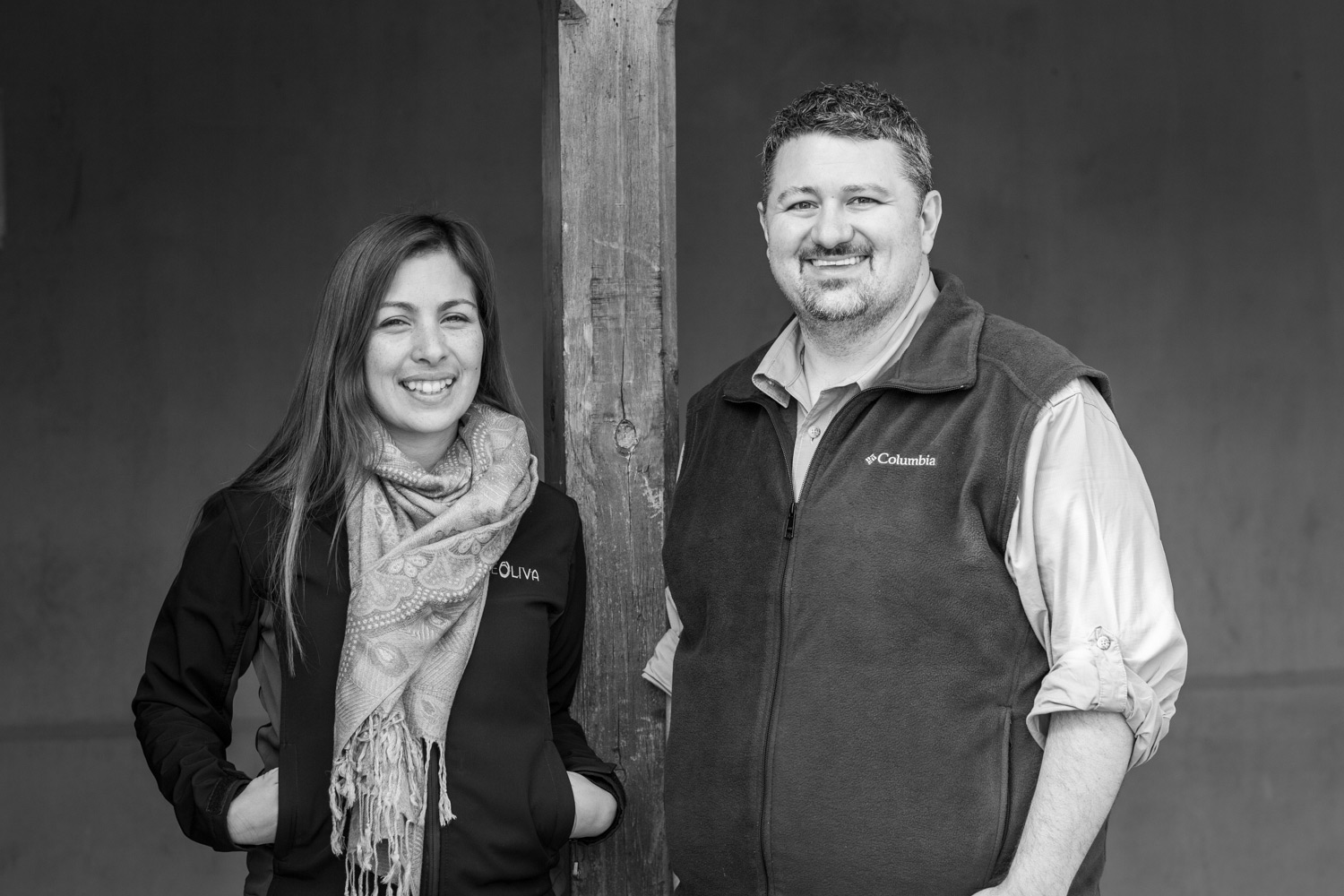
Unfortunately, an epic 10-year-long drought continues to dog the country. Rainfall in central Chile has averaged 20 to 45 percent less than normal, making it difficult for farmers to replenish their irrigation reservoirs. Runoff from snowmelt has dwindled to a trickle. According to NASA’s Earth Observatory website, the last “mega-drought”on this scale likely occurred over 1000 years ago.
Precious Relationships with Experts Pay Dividends Again
Nevertheless, my Chilean contacts were optimistic that this season’s harvest would be a good one. (Water deprivation can actually intensify an olive’s flavors and aromas, even if yields are reduced.) I was very much looking forward to my annual visit. But it was not to be.
When the seriousness of the pandemic became evident, I developed several contingency plans.
(Actually, I do this every quarter to ensure your supply of premium extra virgin olive oil is not interrupted.)
Because of the strong relationships I’ve cultivated over the years with Chile’s top olive oil producers and experts, I knew I could secure three gold-medal-caliber just-pressed oils for my Club members. The big question was, “How can I get the oils to the US as quickly as ever, preserving their flavors, aromas, and healthful polyphenols?
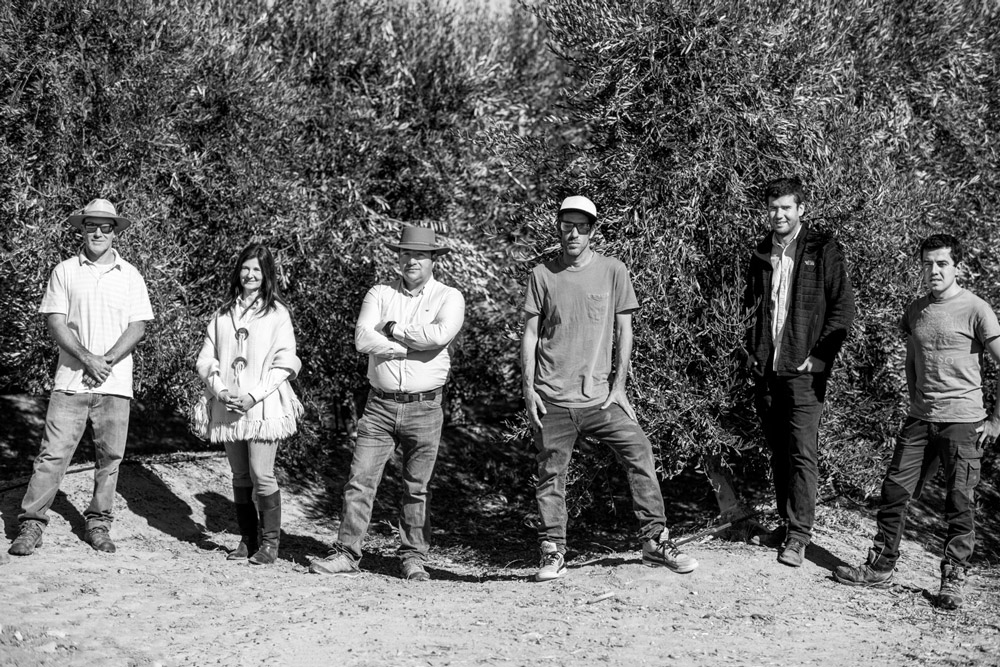
There were few jets servicing Chile after it closed its borders—one to two flights a week. No bueno! The freight company I’ve worked with for years was sympathetic, but couldn’t help. For the first time, I investigated shipping the oils as quickly as possible via boat in climate-controlled containers. Ultimately, United Parcel Service came to the rescue. UPS, the carrier the Club uses domestically to deliver olive oils to your door, reserved the required space on its cargo planes. They cautioned, however, that our oils could get bumped by fresh salmon, a valuable Chilean export in season now. Fortunately, that didn’t happen. You can imagine how nervous your control-obsessed Olive Oil Hunter—and now de facto Operations Manager—was until all the olive oils cleared US Customs!
Fresh Summer Produce, Meet Fresh EVOO
As for the oils themselves, I opted to collaborate exclusively this quarter with a single producer—Alonso. I have worked with this remarkable and consistent farm, called Pobeña (read more about Alonso below), for five years, and knew I could trust this estate to share its best olive oils with our Club. With over 1,100 acres of olive groves, seven varietals, multiple micro-climates, a state-of-the-art mill, and one of the strongest teams in Chile—one that understands implicitly how I work and what I expect—I knew that together, we could make our New World partnership work yet again, even under extraordinary circumstances.
We could not have done it without the help of Denise Langevin, a friend and accomplished olive oil expert from central Chile (read more about her and how we orchestrated tastings and made blends below). Denise assisted me for several weeks, becoming my “boots on the ground.”
When you taste these exquisite well-balanced blends, you’ll be amazed at how distinct each one is, even though the olives came from a single farm. As always, I’ve included recipes (see below) to complement the oils’ unique qualities. Of course, when olive oils are this fresh, you’ll want to drizzle them on everything from grilled bread to straight-from-the-garden (or farmer’s market) produce—they are absolutely mind-blowing on juicy summer tomatoes. I hope these oils give you and your loved ones a small measure of joy each time you use them, and more importantly, a satisfying sense of connection to the passionate, dedicated people who labored tirelessly to put them on your table. Stay safe.
Happy drizzling!

T. J. Robinson
The Olive Oil Hunter®
This Quarter’s First Selection
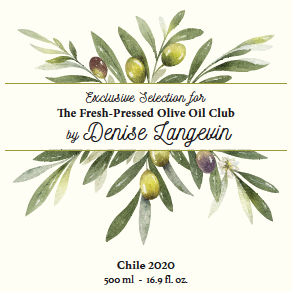
I was first introduced to Denise Langevin, an olive oil educator and journalist, in 2013 while visiting the Don Rafael Estate in Chile’s Lontué Valley. At the time, she was the estate’s export director. In hindsight, the meeting was providential. Little did I know what a vital role Denise would play during the 2020 Chilean harvest.
We were in touch intermittently in the years that followed, exchanging the occasional email or phone call. In the meantime, this petite woman with the ready smile and quiet demeanor was in demand as a credentialed olive oil expert, judging competitions all over the world. Rarely was she in Chile when I was (May), as in the spring she often traveled to the US for the esteemed LA International Olive Oil Competition, to Canada for the Olive d’Or, or to China, Portugal, France, Italy, Israel, Brazil, or Germany.
Spanish is her native tongue—Denise was born in Chile—but she can also converse in French or English. However, it was her fluency in the dialect used by critics of olive oil that made her such a valuable asset to the Fresh-Pressed Olive Oil Club during this unprecedented quarter.
Just as sommeliers have their own evocative terms to describe the impressions wines create on the senses, so, too, do professional olive oil tasters. We approach each olive oil sample methodically, usually beginning with the oil we expect to be the mildest based on the varietal and typical flavor profile. (For the benefit of Club members, I always classify the oils as mild, medium, or bold in the producer profiles and tasting notes.)
First, we evaluate the fruitiness of the oil. In monocultivars, is the oil a good expression of the varietal? Next, we judge the bitterness, then the spiciness (aka pepperiness), and finally, we determine whether the oil is balanced and harmonious. Every olive oil has a life story to tell if you can recognize the clues revealed on the nose and on the palate.
Denise can follow the olive’s narrative; she and I, both with years of tasting experience, spoke the same olive oil “language”. She understood my perfectionist tendencies and need to control every possible variable until the oils are in the hands of my Club members. (Though I’m always diplomatic, I sometimes wonder if I’ve been dubbed the enfant-terrible of the olive oil world. (As long as the oils are the very best they can be, I’m happy to be guilty as charged!)
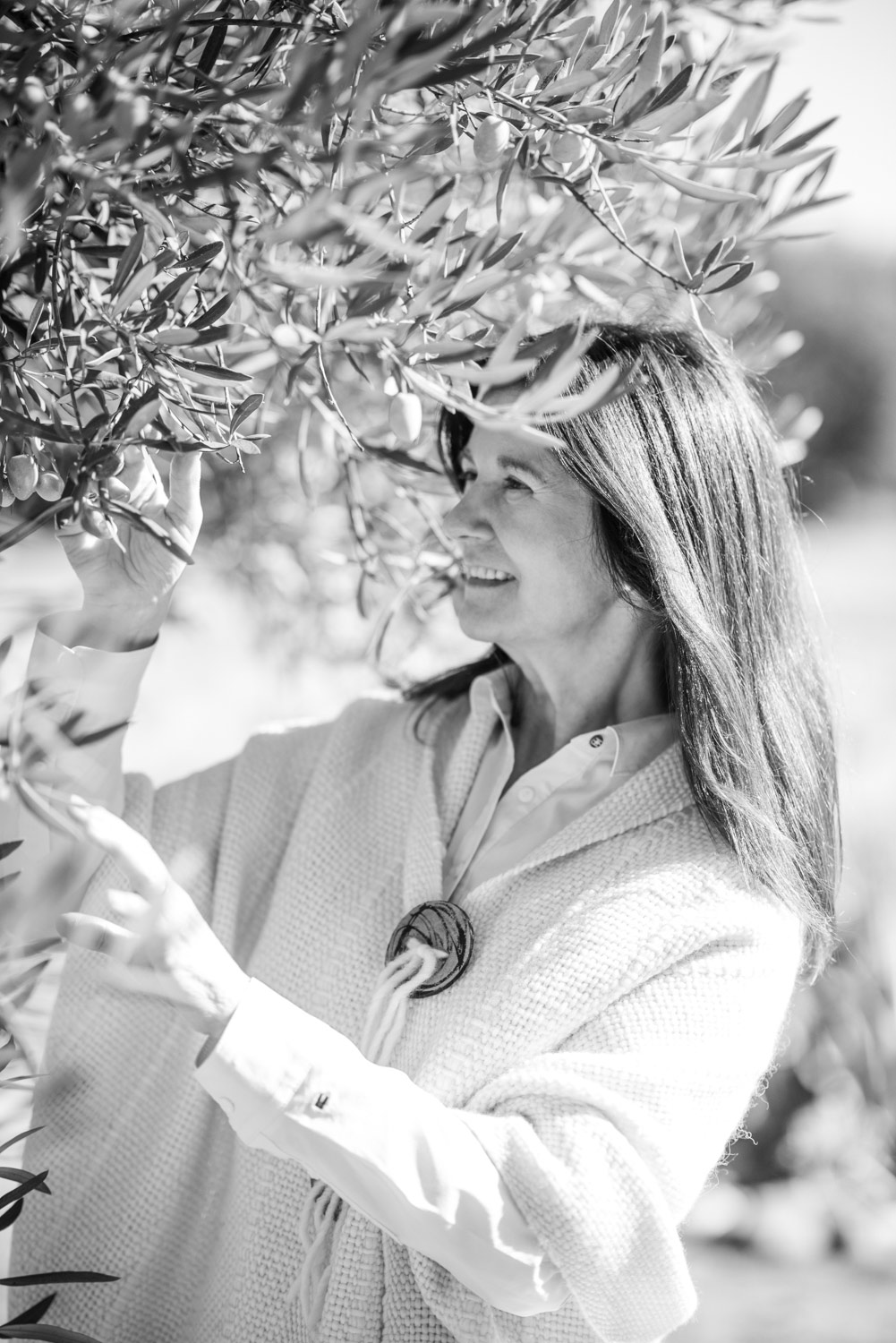
As our working relationship evolved over Skype and Zoom, Denise became my trusted surrogate in Chile. She drove from her home to the Pobeña farm numerous times (about an hour and a half each way) and interacted on my behalf with the harvest team. (I was unable to ship samples to my usual collaborator, Italian master miller Duccio Morozzo Della Rocca, as Rome had closed its Customs offices weeks earlier.)
Our routine for three weeks went something like this: On Mondays, the Alonso team would overnight numbered olive oil samples—mostly single varietals—to Denise, then seal the tanks with the corresponding numbers. She’d receive and taste the just-pressed oils, then share her impressions with me. On Thursdays, I’d anxiously await delivery of duplicate samples, then taste them. On Fridays, I’d re-taste the oils. Then Denise and I would compare notes and impressions. Our favorite oils—oils we deemed potential gold-medal winners if entered in international competitions—became the building blocks for the blends we created. Then Denise, as my designated “quality control manager,” oversaw the process at the mill of recreating our blends on a larger scale, and sealed those tanks. She was an absolute godsend, and I owe her a debt of gratitude for helping me deliver to you the beautiful fresh-pressed oils you now have in your hands.
As a way of acknowledging Denise’s invaluable help, I decided to name a blend after her. Her reaction? “I am so happy!” She chose the milder Arbequina, Frantoio, and Leccino olive oil to bear her name. Its warm and genial flavor profile echoes some of Denise’s own traits: I think it was an excellent choice, and I believe you’ll agree once you taste it.
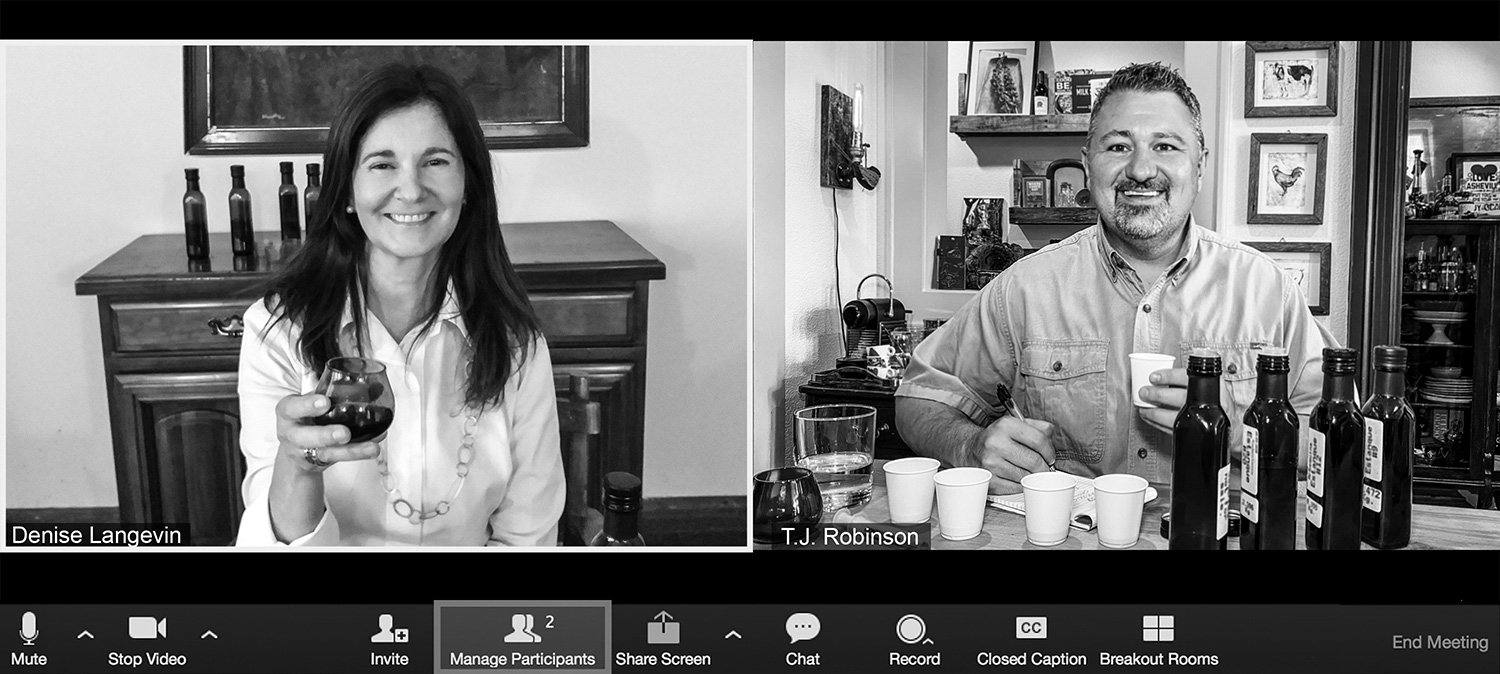
Impressions and Recommended Food Pairings
My Merry Band of Tasters, who joined me for a simultaneous tasting via Zoom, identified a number of aromas after we poured the mildest oil of our samples, alluringly green in the glass. Among them were almonds, green banana, kale, spinach, Golden Delicious apple, vanilla, white pepper, and a whiff of oregano. On the palate, this beautiful, well balanced oil showed a nutty side (hazelnuts), the sweetness of apple, hints of lemon zest and ginger, along with the bitter notes of Belgian endive and the pepperiness of watercress.
Try it with summer squash, sweet potatoes, mild fin fish, grilled shrimp or lobster, pork, chicken, rice, eggs, carrots, bell peppers, sweet corn, Asian curries, simple pasta dishes (including pasta salads), yogurt, ice cream, or mild cheeses (including cottage cheese), and any salad featuring fruit.
This Quarter’s Second Selection
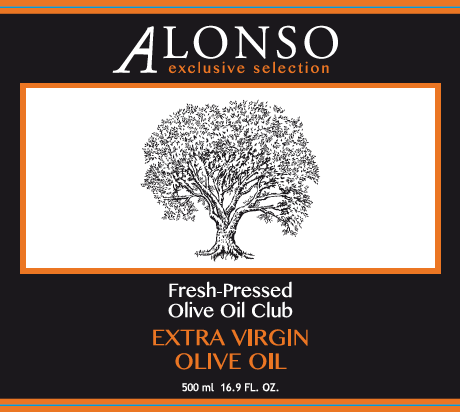
In my work as the Olive Oil Hunter I’ve emphasized the importance of cultivating relationships, just as a grower cultivates trees. When I am on the ground, collaborating with producers in different parts of the world, I cherish the warm welcomes from the people I’ve gotten to know over the years, whose labor I witness and champion, and whose triumphs I celebrate. This network of professional respect and personal support enables me to find the finest and freshest olive oils on earth to share with you, my lucky Club members.
How much more crucial those relationships are when we’re 5,000 miles apart! Because of our established two-way trust, the Alonso team and I could speak in shorthand and move mountains (or, rather, precious volumes of fresh-pressed liquid gold)… through Zoom and Skype
The award-winning Alonso groves represent the culmination of more than a decade of work by brothers Juan José (nicknamed “Juanjo,” pronounced with a soft “j”) and Ignacio Alonso. Their father—a successful shoe manufacturer who, as a boy, fled to Chile to escape Franco’s regime in Spain—dreamt of producing ultra-premium olive oil in his retirement. In the mission to fulfill their father’s legacy, the brothers staked out 850 acres of land near Chile’s coast, perfect for olives, with rocky terroir and many microclimates. (It was not lost on anyone that the land selected was also in close proximity to primo waves, satisfying the brothers, who are avid surfers.)
The past five seasons I’ve visited their farm, always excited to taste the fruits of their harvest and enjoy the company of their talented team. They were excited to rally to help me fulfill this unprecedented remote Olive Oil Hunter’s quest—from another hemisphere. Truly, a first for the Fresh-Pressed Olive Oil Club!
From the start, as Juanjo reported, this season posed its challenges. Chile has been in a mega-drought (that’s the scientific term) for a decade now. “We need 300 to 400 milliliters of rain to save for the summer,” Juanjo explained, “and this year we got zero.” Resourceful producers work around Chile’s lack of water in ingenious ways—for the Alonsos, it’s with a 55-acre dam that supplies the reservoirs for their groves. But with no rainfall, they had to take stronger action, making strategic decisions to allocate the scant water supply to specific trees and reducing even further the amount of water distributed to other areas of the farm.
As veteran Club members know, though, a certain degree of water stress to the olive tree can benefit the oil that results from the fruit. “Higher in polyphenols,” observed Juanjo, “and more flavor. The difference is amazing.”
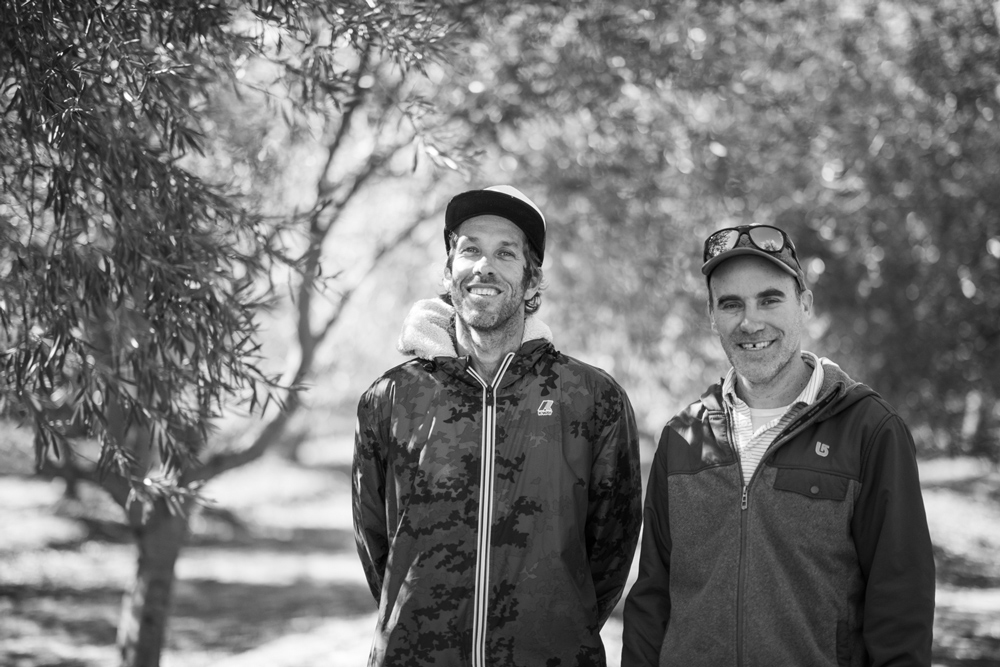
José Reyes, logistician extraordinaire, served as the quarterback and cocaptain of my all-star harvest team, calling the plays and making sure that everyone and everything was in place and ready to go. He also hired the photographer to document this quarter’s experience. (In usual times, one of my trusty Merry Band of Tasters captures the breathtaking and charismatic photos that grace the Pressing Report. But he, too, was grounded halfway across the globe.)
José—whose official title is general manager—spent hours with me on Zoom and Skype calls to discuss the olive varieties that were most promising for the ultra-flavorful, high-polyphenol oils I insist on for my Club, and he shipped samples to me like clockwork. The Coratina at Alonso has been consistently excellent for years running; this season it was superlative, and I knew I wanted to build a blend around it.
With samples in hand, I tinkered and tasted until I had created a perfectly harmonious blend—a beguiling balance of aromatics, fruitiness, bitterness, and pepperiness.
Coratina’s intensity goes a long way, so it comprises about 40 percent of this blend. To soften the edges and bring out the oil’s complexity, I added a complement of Arbequina, the fragrant dynamic duo of Frantoio and Leccino (the two varietals are planted and harvested together at Alonso), and a finishing touch of zesty Koroneiki.
I’d liken this verdant, intoxicating blend to a Rhone wine—the whole is indisputably greater than the sum of its parts. When you taste it, I hope you’ll think about the individual components—and the individual people—coming together for this one-of-a-kind collaboration.
Impressions and Recommended Food Pairings
Grassy, herbaceous, and complex on the nose, featuring arugula, kale, rosemary, mint, and parsley with touches of artichoke and citrus peel. An intense chicory-like bitterness blooms in the mouth abetted by celery leaves, fennel, kale, artichoke, arugula, parsley, and the spiciness of fresh ginger. Expect a lingering, mouth-warming finish.
This wonderful all-purpose oil would complement chilled summer soup, country-style breads, pizza, white beans, tabbouleh, lentils, grilled meats (beef, pork, chicken), grilled vegetables (eggplant, bell peppers, asparagus, artichokes), caprese salad, oven-roasted chicken with potatoes, pasta tossed with pesto or tomato sauce, charcuterie platters, salmon (see a recipe for Salmon Tartare below), aged cheeses, and chocolate cake or mousse.
This Quarter’s Third Selection
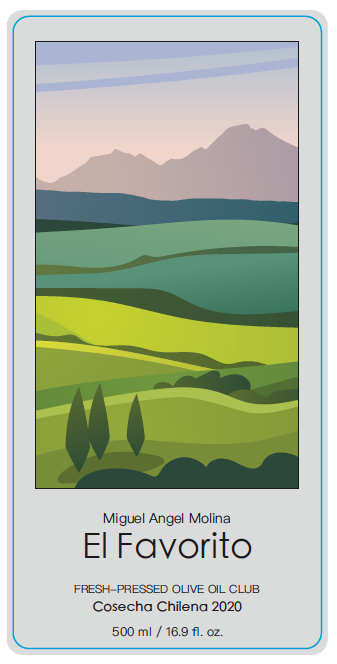
In Chile there is a person whose judgment I trust so implicitly, whose
palate so perfectly aligns with my own, that the Club has created a special label.
This is now the third exclusive oil to appear as “El Favorito”—The Favorite—
which is an homage to the exchange I have every year with the olive oil genius
Miguel Ángel Molina.
Here’s how the scene unfolds:
The Olive Oil Hunter: Miguel, what’s your favorite oil this season?
Miguel: (puts his finger on a sample bottle or draws me a taste from a just-pressed tank of oil)
The Olive Oil Hunter: (concurs)
{The End}
I first met Miguel, the estate manager of the Alonso farm, six years ago. Immediately I sensed the perceptiveness of his palate and admired his meticulous, steady approach to the work. A largely self-taught “olive whisperer,” Miguel is also a master miller with a background in Chile’s fruit agriculture. His early career as a fruit packer informs his expert handling of olives: he is gentle and intuitive, with the understanding that perfect fruit needs special care.
In past seasons I’d tour the expansive groves with Miguel, both of us riding dirt bikes. We’d stop periodically to test certain varietals for ripeness or to join the harvest team in the picking. As this season our visits could take place only in the virtual realm, it helped that I knew exactly what part of the farm Miguel was describing and could envision him buzzing around between the trees.
Miguel was introduced to excellence in olive oil by the incomparable Don Willy at TerraMater, Chile’s oldest olive farm, founded by a trio of Italian sisters in the 1940s. Under Don Willy’s pioneering leadership, TerraMater helped elevate Chilean olive oils to world-class status in the 2000s. From his mentor Miguel learned how to test olives for ripeness, how to mill, and how to create a harmonious blend. He developed and refined his holistic understanding of the olive’s journey from the tree to the table.
Two-and-a-half hours south of the Alonso farm is the town of Talca, where Miguel and his family live. He commutes up on Monday, stays at the mill through Thursday, then journeys back home to spend three days with his wife and children. It is an exhausting schedule, but Miguel is tirelessly and enthusiastically devoted to both his family and his craft.
When I posed the question of “el favorito” this time, on a video call rather than in the familiar surrounds of the mill or amid the silvery foliage of the olive grove, Miguel took a dramatic pause. I was expecting him to say, “Coratina,” as the varietal is always a standout at the Alonso farm. “Picual,” he intoned, with the confidence of a seasoned card player who knows he holds a winning hand. He elaborated (unusual for this man of few words): “It is very difficult to make a great Picual. But this year we have a winner.”
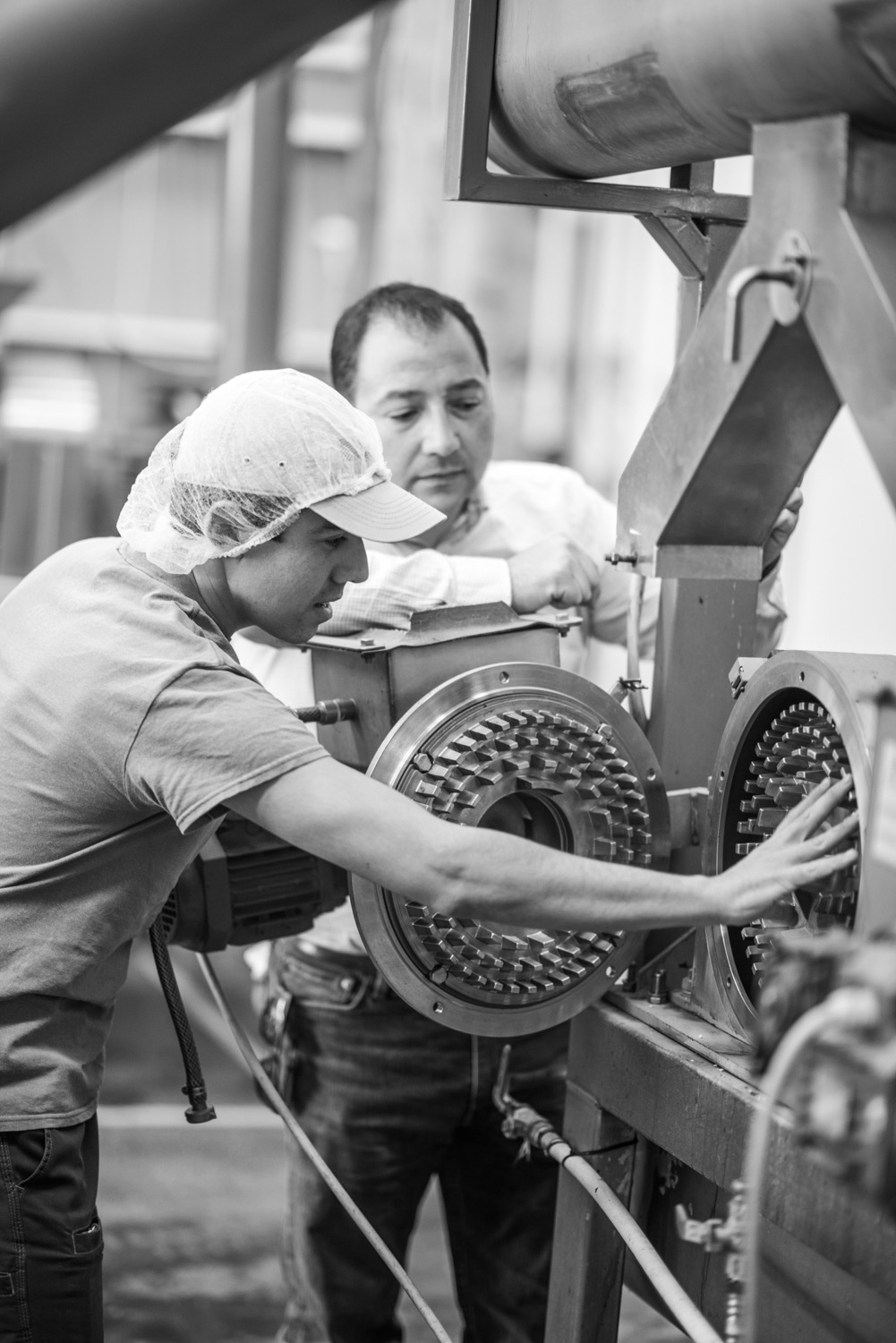
And, as ever, Miguel’s assessment was in exact alignment with mine. I love a very green, early-harvest Picual—the kind I call “pesto in a bottle”—but the Spanish varietal can be tricky, with my desired outcome depending on the fruit (perfect), time of harvest (early), and miller (genius). This Picual was sublime solo, yet I suggested that it could be even more divine with a tiny splash of another oil to highlight its complexity and richness, and Miguel agreed. A whiff (5 percent, tops) of Greek Koroneiki did exactly that. (I am reminded of Churchill’s quip when asked for his recipe for a very dry martini: “Just nod in the direction of France.” With the micro-addition of Koroneiki, you might say we nodded in the direction of Greece.)
When Miguel and I had perfected this third oil—remotely, no less—I was so pleased and relieved I nearly wept. The camaraderie of my Chilean colleagues moved me profoundly throughout this experience, and the fact that, together, we curated a truly spectacular trio of fresh-pressed oils during one of the most challenging periods in recent memory—well, I regard it as a testament to passion, persistence, and partnership. I hope that these emerald elixirs will bring you good health and whet your appetite, all while connecting you to the big-hearted artisans who nurtured and produced them a hemisphere away.
Impressions and Recommended Food Pairings
Delightful on the nose, inviting comparisons to spinach, tomato leaf, celery leaves, wheatgrass, green walnuts, basil, microgreens, and kiwi. In the mouth, it’s like a big green bouquet. Mildly but refreshingly astringent, like green tea or walnuts, tempered with the bitterness of arugula. My tasters and I called out raw artichoke, wheatgrass, green apple, romaine lettuce, spinach, rosemary, thyme, and wild mint. Finishes with a flourish of white pepper.
Pair this muscular oil with gazpacho, guacamole, sourdough bread, potatoes, crudités, grilled beef or lamb, roasted duck, oysters or other shellfish, tomato-based salads or salads featuring bitter or minerally greens, ratatouille, pasta puttanesca, plain yogurt, or chocolate cake or ice cream.
Olive Oil and Health
Some olive oils fight heart disease and cognitive decline. But to get the greatest benefit, you need to pick the right stuff
Reprinted from an article in AARP Bulletin by Clint Carter, April 2020
In normal times, Italians outlive Americans by an average of four years. But in the Sicani Mountain region of Sicily, marked by rolling hills covered with olive trees, the locals live past 100 at a rate more than four times greater than Italy as a whole.
Sicani Mountain villagers eat a Mediterranean diet, snacking on olives and using the fruit’s oil to prepare dinner. As a result, their arteries are as supple as those of people 10 years younger, researchers say.
“We’ve known for 50 or 60 years that the Mediterranean diet is beneficial for health, but olive oil is emerging as the most important ingredient,” says Domenico Praticò, MD, director of the Alzheimer’s Center at Temple University. Among people in olive-growing regions, the incidences of heart disease, cancer, type 2 diabetes, and even cognitive decline are very low.
How Olive Oil Offers Hope
Praticò and others have been exploring the effect of extra-virgin olive oil, or EVOO, on the brain. They’ve discovered that compounds in the fat of this high-grade oil can flush out proteins that gum up the communication channels between brain cells. That might delay, and even possibly reverse, Alzheimer’s and other dementias.
One compound that seems to drive this effect is an olive-derived polyphenol called oleocanthal. In animal studies at Auburn University, oleocanthal demonstrated an ability to “rinse out” amyloids, which form the plaques associated with Alzheimer’s. In mice EVOO can “flush out” tau, a protein that hinders language skills and memory in humans.
Buyer, Beware!
But not all the EVOO sold at the supermarket is as potent as the oil that researchers use to “flush out” neurotoxins. In lab tests more than half of imported EVOO purchased at retail failed to meet standards of quality and flavor (a marker of antioxidant content) established by the Madrid-based International Olive Council. In a 2015 analysis from the National Consumers League, 6 in 11 EVOOs obtained from reputable stores such as Safeway and Whole Foods failed the extra virgin test. They were either mislabeled or had degraded during shipping and storage. So what does all this mean? You need to know a few shopping tricks if you want to get all the protection that EVOO offers to the centenarians of the Sicani Mountains.
Kudos from Club Members
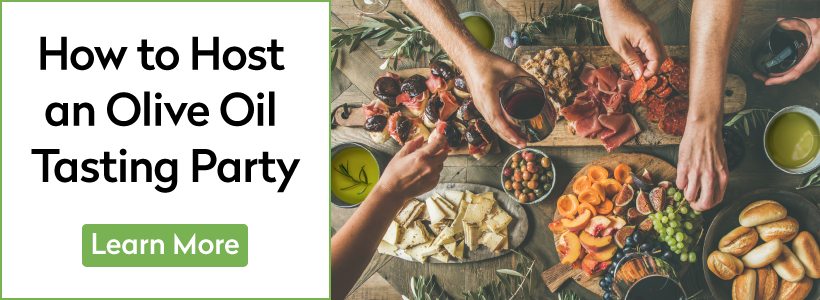
Recipes
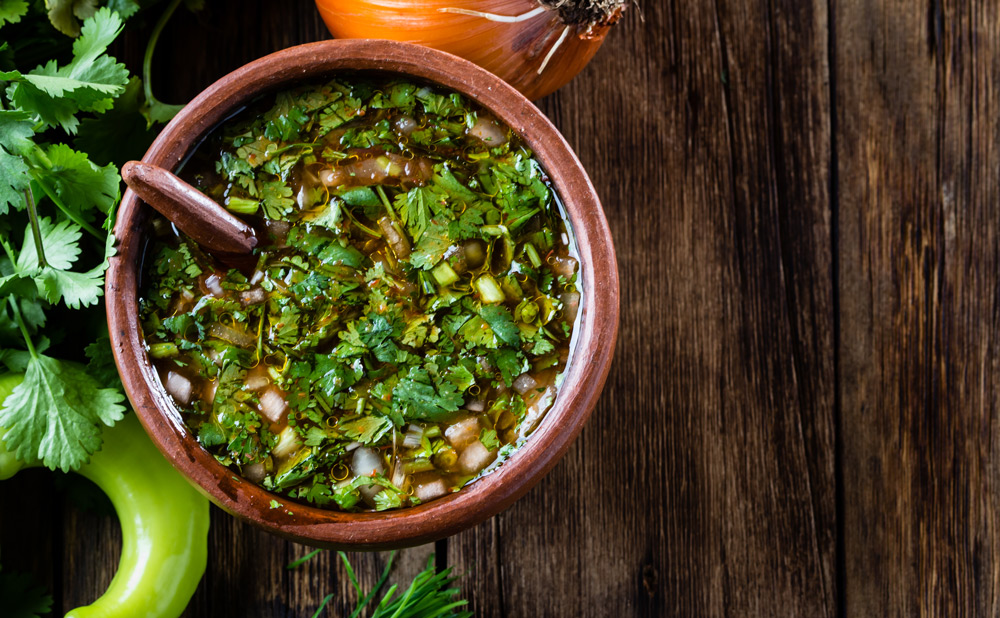 Chilean Salsa (Pebre) Lilly, the talented cook/housekeeper at the Don Rafael farm in Chile’s Lontue Valley, shared her recipe for Chile’s favorite condiment during one of our many visits to the farm. Serve it with bread, meat, or seafood. It’s best, she says, when made less than 2 hours ahead. view recipe
Chilean Salsa (Pebre) Lilly, the talented cook/housekeeper at the Don Rafael farm in Chile’s Lontue Valley, shared her recipe for Chile’s favorite condiment during one of our many visits to the farm. Serve it with bread, meat, or seafood. It’s best, she says, when made less than 2 hours ahead. view recipe Grilled Tuna with Castelvetrano Olive Relish Feel free to substitute any meaty fish steaks or fillets for the tuna, such as swordfish, red snapper, branzino, salmon, or Chilean sea bass. If you have any leftover relish, serve it with bread or potatoes. Ingredients 4 tuna or swordfish steaks, each about 6 ounces Extra virgin olive oil Salt and freshly ground black… view recipe
Grilled Tuna with Castelvetrano Olive Relish Feel free to substitute any meaty fish steaks or fillets for the tuna, such as swordfish, red snapper, branzino, salmon, or Chilean sea bass. If you have any leftover relish, serve it with bread or potatoes. Ingredients 4 tuna or swordfish steaks, each about 6 ounces Extra virgin olive oil Salt and freshly ground black… view recipe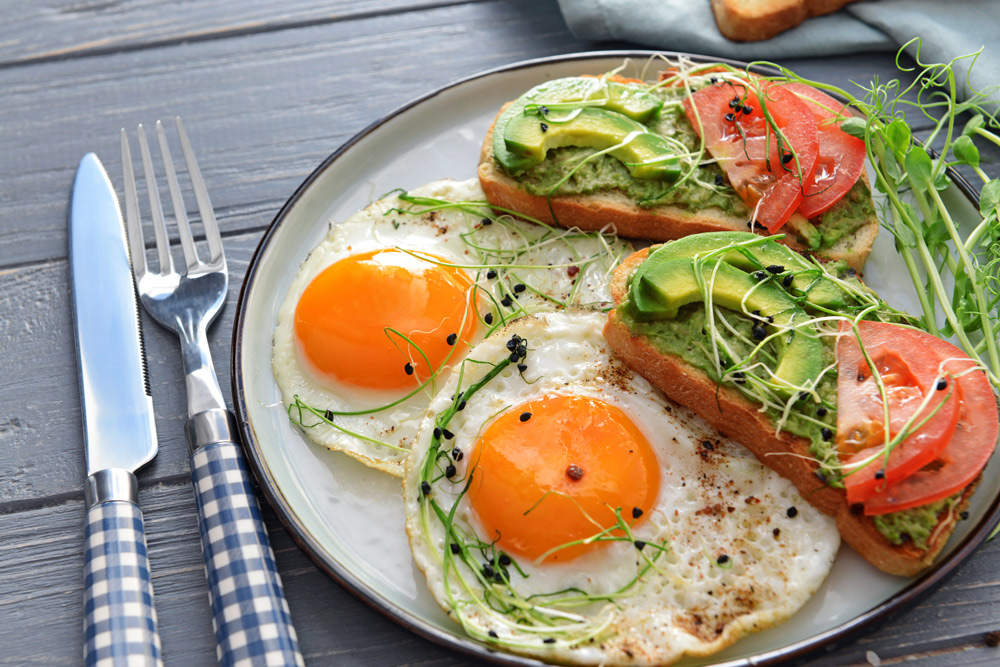 Olive Oil-Fried Eggs with Chile and Sprouts This “healthyish” version of huevos rancheros takes only minutes to make and is both satisfying and colorful—perfect for breakfast or a light lunch or dinner. Ingredients 1 cup sprouts (such as sunflower, radish, or alfalfa)1 teaspoon fresh lime juice Kosher salt and freshly ground pepper2 tablespoons extra virgin olive oil, plus more for drizzling2 large… view recipe
Olive Oil-Fried Eggs with Chile and Sprouts This “healthyish” version of huevos rancheros takes only minutes to make and is both satisfying and colorful—perfect for breakfast or a light lunch or dinner. Ingredients 1 cup sprouts (such as sunflower, radish, or alfalfa)1 teaspoon fresh lime juice Kosher salt and freshly ground pepper2 tablespoons extra virgin olive oil, plus more for drizzling2 large… view recipe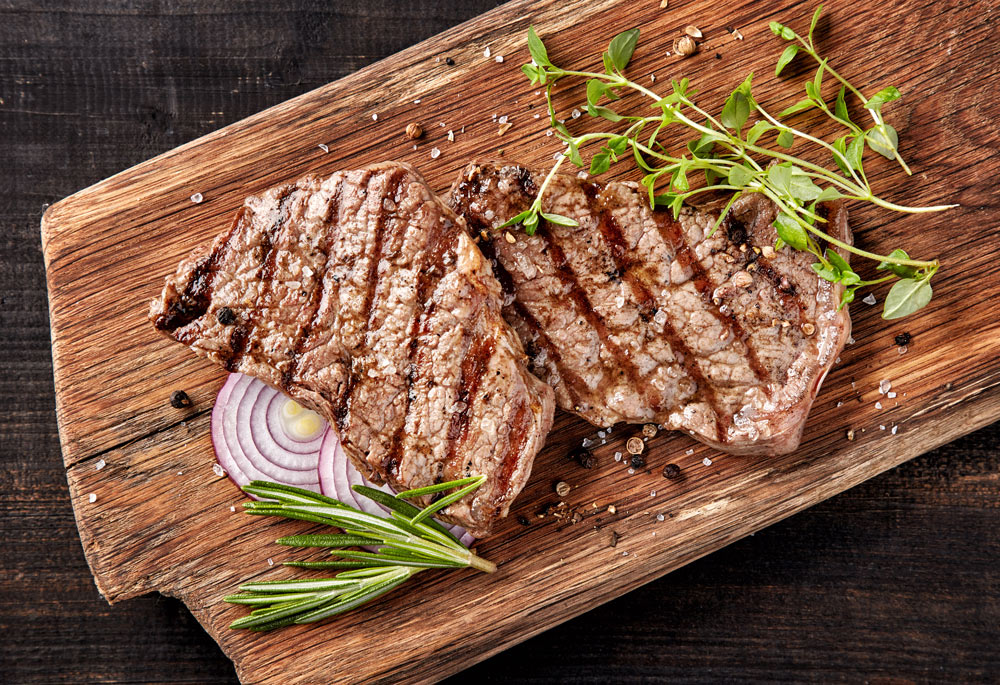 Hangar Steak with Olive Oil and Herbs Hanger steak—sometimes called bavette—is beefy-tasting and relatively economical. If you can’t find it at your butcher counter (we all have to be flexible these days), substitute flat iron steak. Allow 2 hours for the steak to marinate. Ingredients 2 tablespoons Worcestershire sauce2 tablespoons soy sauce2 tablespoons Thai fish sauce2 tablespoons maple syrupOne 1-pound hanger steak,… view recipe
Hangar Steak with Olive Oil and Herbs Hanger steak—sometimes called bavette—is beefy-tasting and relatively economical. If you can’t find it at your butcher counter (we all have to be flexible these days), substitute flat iron steak. Allow 2 hours for the steak to marinate. Ingredients 2 tablespoons Worcestershire sauce2 tablespoons soy sauce2 tablespoons Thai fish sauce2 tablespoons maple syrupOne 1-pound hanger steak,… view recipe Olive Oil Martini This unusual libation features a technique professional bartenders call “fat washing.” And once you strain the infused gin, you can reuse the olive oil in another recipe. Saveur quipped that it could (tongue in cheek) be called a “quarantini.” Ingredients One 750 milliliter bottle London dry gin4 ounces (1/4 cup) best quality extra virgin olive… view recipe
Olive Oil Martini This unusual libation features a technique professional bartenders call “fat washing.” And once you strain the infused gin, you can reuse the olive oil in another recipe. Saveur quipped that it could (tongue in cheek) be called a “quarantini.” Ingredients One 750 milliliter bottle London dry gin4 ounces (1/4 cup) best quality extra virgin olive… view recipe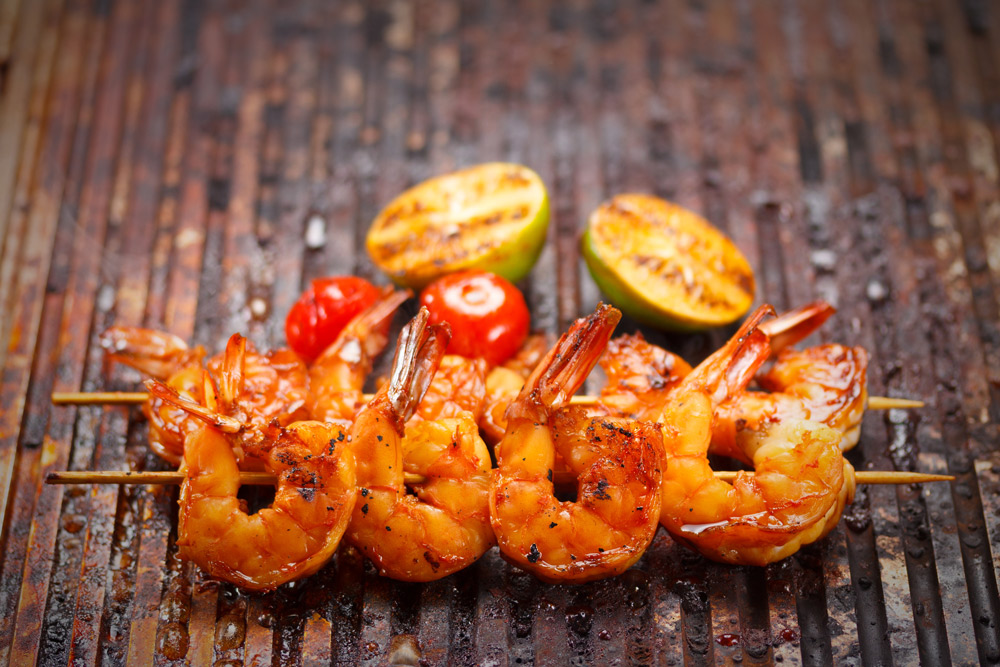 Shrimp BLT Salad With more than 2,500 miles of coastline and cold, temperate waters, Chile hosts one of the most robust aquacultures in the world. Perhaps you have eaten the country’s succulent shrimp, said to be better than that from the Pacific Northwest or Canada. In any case, dinner can be on the table in 20 minutes or… view recipe
Shrimp BLT Salad With more than 2,500 miles of coastline and cold, temperate waters, Chile hosts one of the most robust aquacultures in the world. Perhaps you have eaten the country’s succulent shrimp, said to be better than that from the Pacific Northwest or Canada. In any case, dinner can be on the table in 20 minutes or… view recipe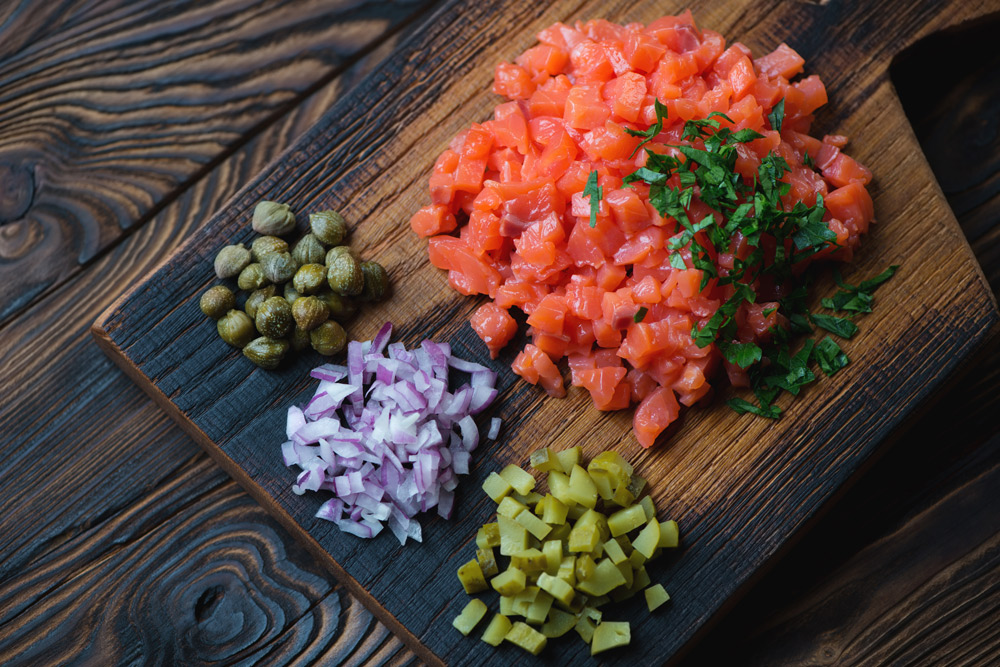 Salmon Tartare Use the freshest salmon you can find for this recipe, which was shared with us by Chile-based olive oil expert Denise Langevin. We prefer wild-caught salmon or farm-raised Chilean Verlasso salmon, available online or at many supermarkets. Ingredients 1 pound boneless skinless salmon fillets, chilled and diced into 1/4-inch cubes1/4 cup finely diced sweet or… view recipe
Salmon Tartare Use the freshest salmon you can find for this recipe, which was shared with us by Chile-based olive oil expert Denise Langevin. We prefer wild-caught salmon or farm-raised Chilean Verlasso salmon, available online or at many supermarkets. Ingredients 1 pound boneless skinless salmon fillets, chilled and diced into 1/4-inch cubes1/4 cup finely diced sweet or… view recipe Skillet Lemon Olive Oil Cake Ken Gordon, a longtime veteran of our Member Services Team and a talented pastry chef, shared this recipe for a tasty skillet cake that is gluten-free, soy-free, and optionally dairy-free. Ingredients For the cake: Olive oil or butter for greasing the pan2 cups gluten-free all-purpose flour1/2 cup blanched almond flour1 cup granulated sugar1 teaspoon baking… view recipe
Skillet Lemon Olive Oil Cake Ken Gordon, a longtime veteran of our Member Services Team and a talented pastry chef, shared this recipe for a tasty skillet cake that is gluten-free, soy-free, and optionally dairy-free. Ingredients For the cake: Olive oil or butter for greasing the pan2 cups gluten-free all-purpose flour1/2 cup blanched almond flour1 cup granulated sugar1 teaspoon baking… view recipe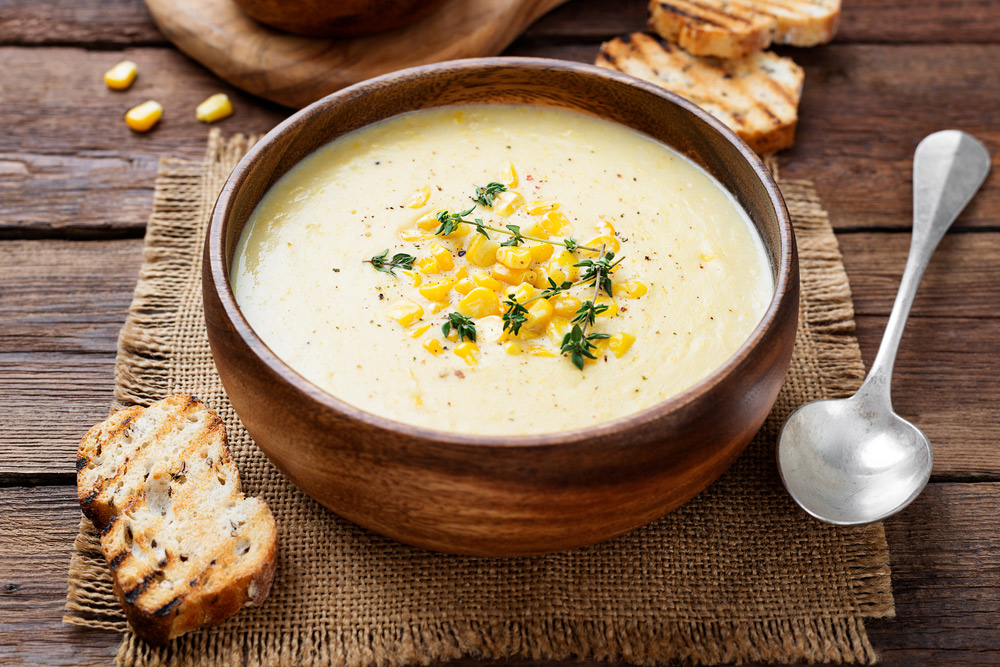 Summer Corn Chowder This is the perfect soup to make with farmstand sweet corn. If desired, garnish the soup with diced avocado or chopped cooked bacon. Ingredients 2 tablespoons butter2 tablespoons extra virgin olive oil, plus more for drizzling1 onion, peeled and diced 2 garlic cloves, peeled and minced6 sprigs fresh thyme, leaves only1/4 cup all-purpose flour6 cups… view recipe
Summer Corn Chowder This is the perfect soup to make with farmstand sweet corn. If desired, garnish the soup with diced avocado or chopped cooked bacon. Ingredients 2 tablespoons butter2 tablespoons extra virgin olive oil, plus more for drizzling1 onion, peeled and diced 2 garlic cloves, peeled and minced6 sprigs fresh thyme, leaves only1/4 cup all-purpose flour6 cups… view recipe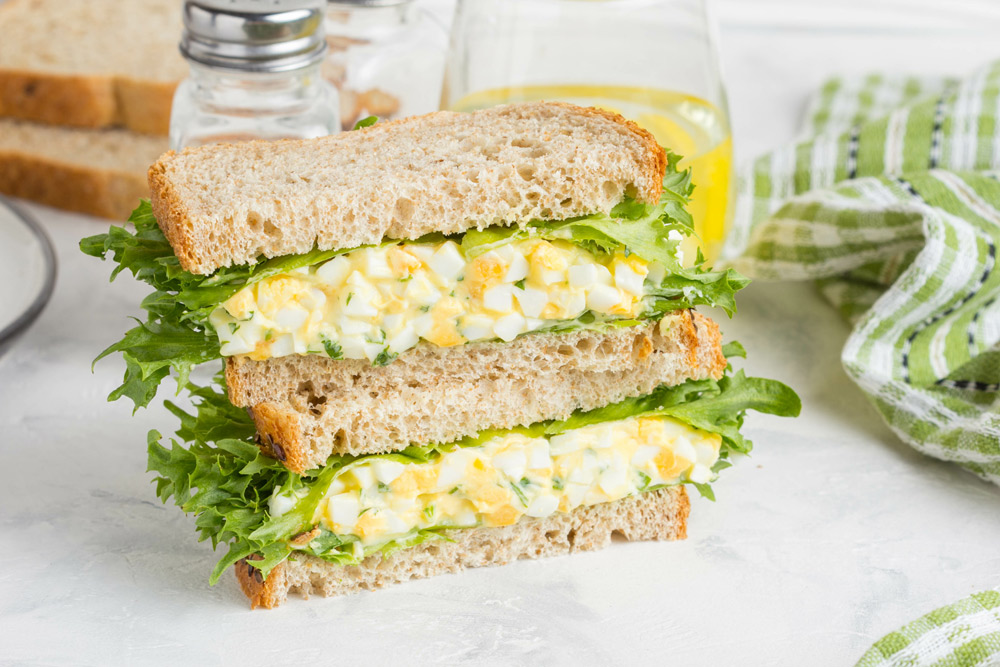 Olive Oil Egg Salad We like to mound this salad in the middle of an attractive plate or bowl and surround it with Belgian endive in a flower petal pattern. It makes a lovely keto-friendly appetizer. Ingredients 1/4 cup extra virgin olive oil, plus more as needed6 garlic cloves, peeled and finely chopped 1 large white onion, peeled and… view recipe
Olive Oil Egg Salad We like to mound this salad in the middle of an attractive plate or bowl and surround it with Belgian endive in a flower petal pattern. It makes a lovely keto-friendly appetizer. Ingredients 1/4 cup extra virgin olive oil, plus more as needed6 garlic cloves, peeled and finely chopped 1 large white onion, peeled and… view recipe
